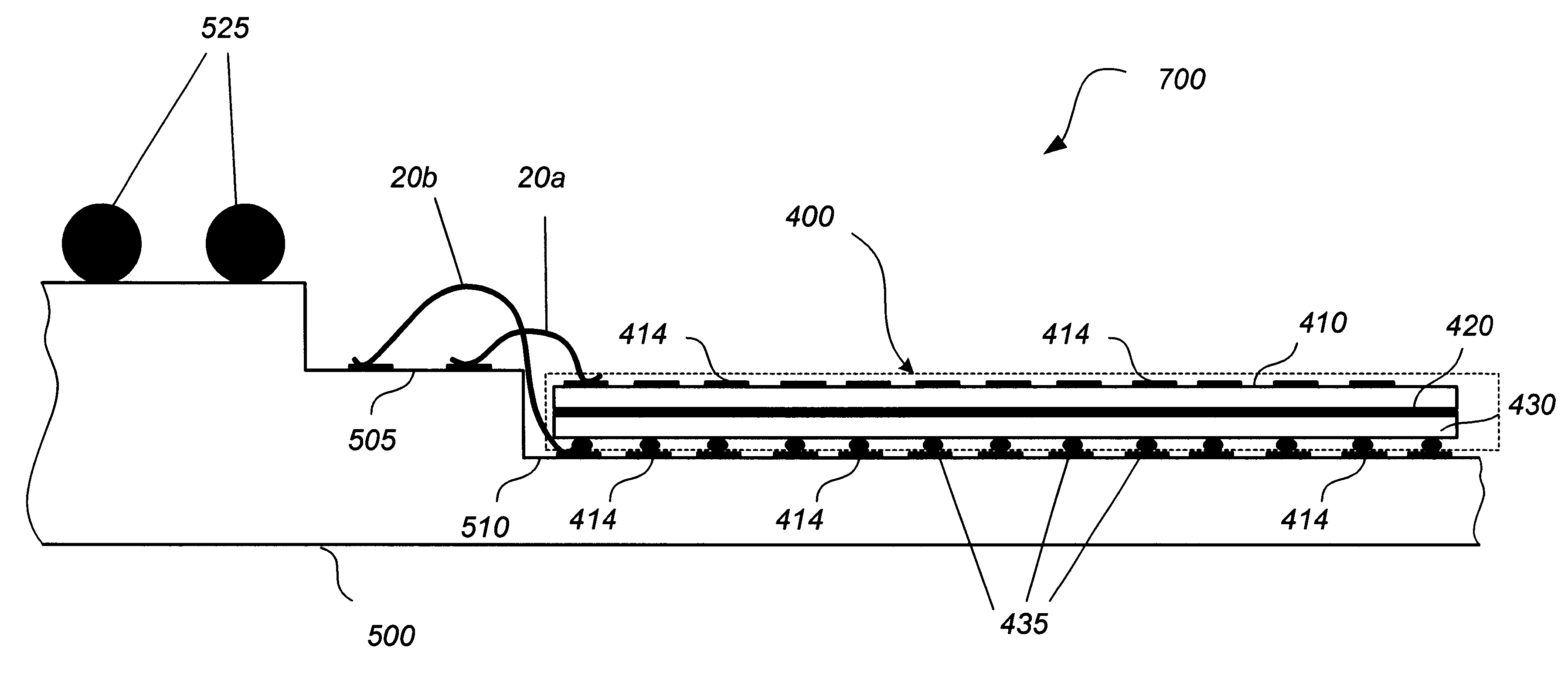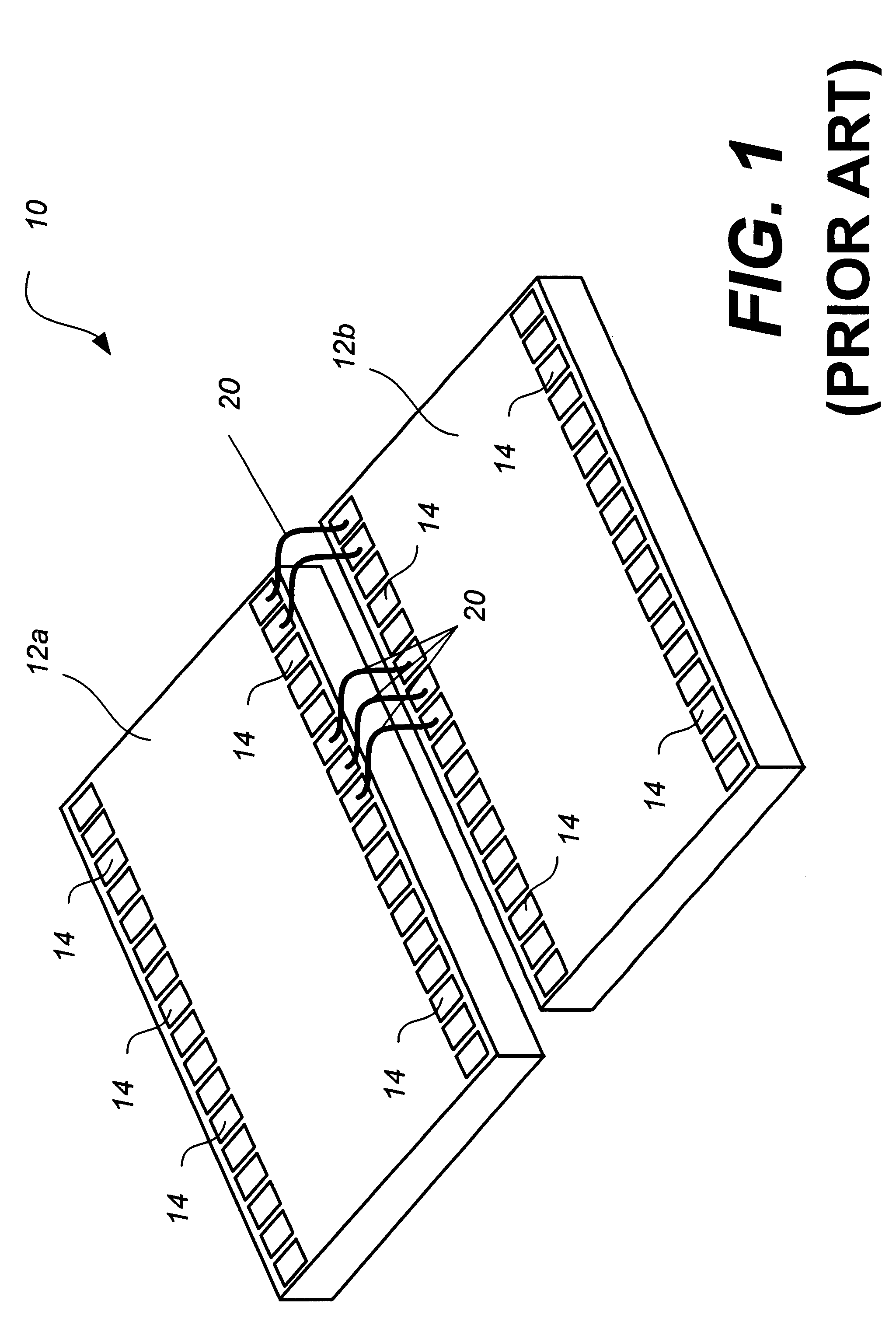Assembly and method for constructing a multi-die integrated circuit
a multi-die, integrated circuit technology, applied in the direction of electrical apparatus construction details, association of printed circuit non-printed electric components, basic electric elements, etc., can solve the problems of high-performance ic products, significant internal routing lengths on a single ic configured on either semiconductor device 12a, 12b, and performance limitation
- Summary
- Abstract
- Description
- Claims
- Application Information
AI Technical Summary
Problems solved by technology
Method used
Image
Examples
Embodiment Construction
Having summarized various aspects of the present invention, reference will now be made in detail to the description of the invention as illustrated in the drawings. While the invention will be described in connection with these drawings, there is no intent to limit it to the embodiment or embodiments disclosed therein. On the contrary, the intent is to cover all alternatives, modifications and equivalents included within the spirit and scope of the invention as defined by the appended claims.
Turning now to the drawings, wherein like reference numerals designate corresponding parts throughout the drawings, reference is made to FIG. 2, which illustrates a schematic of an exemplary operational environment suited for a multi-die IC assembly. In this regard, an exemplary operational environment may comprise a data processing system 100.
As illustrated in FIG. 2, a functional block diagram illustrates the data processing system 100 in which a multi-die integrated circuit assembly may be im...
PUM
 Login to View More
Login to View More Abstract
Description
Claims
Application Information
 Login to View More
Login to View More - R&D
- Intellectual Property
- Life Sciences
- Materials
- Tech Scout
- Unparalleled Data Quality
- Higher Quality Content
- 60% Fewer Hallucinations
Browse by: Latest US Patents, China's latest patents, Technical Efficacy Thesaurus, Application Domain, Technology Topic, Popular Technical Reports.
© 2025 PatSnap. All rights reserved.Legal|Privacy policy|Modern Slavery Act Transparency Statement|Sitemap|About US| Contact US: help@patsnap.com



